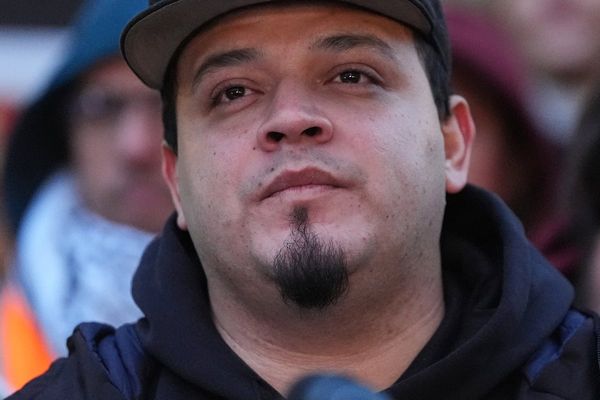
Consumer advocacy group CHOICE has doubled down on its recent sunscreen testing, stating it stands by the stunning results which found only four out of 20 popular sunscreens sold in Australia met their advertised label claim of SPF50.
The group put 20 sunscreens to the test at an independent accredited lab, with most of them falling short. Four products returned SPF results in the 40s, four dropped down into the 30s, and seven landed in the 20s.
The worst performer, according to CHOICE’s testing, was Ultra Violette’s Lean Screen SPF50+ Mineral Mattifying Zinc Sunscreen, which returned a rating of SPF4.
But Ultra Violette has refuted the results, saying this contradicts its own testing and could well be the result of human error.

In a statement on Monday, CHOICE chief Ashley de Silva said the consumer group “stands by its rigorous, independent sunscreen testing” which is said was conducted under the guidance of industry experts and in accredited laboratories.
He explained all 16 sunscreens that didn’t meet their claims were tested to a 10-person panel, in accordance with the Australian/New Zealand Sunscreen Standard.
“As Australia’s leading consumer advocacy organisation, CHOICE has been testing products for decades, and we take our commitment to independence and scientific rigour extremely seriously,” de Silva said.
Breaking down CHOICE’s test
While CHOICE released its report last week, it has now offered more details into the process of testing the products.
As explained by de Silva, all the products tested underwent blind testing. To do that, they were decanted into amber glass jars (which block UV light and prevent ingredient breakdown), sealed, labelled, and transported in line with strict instructions by Sydney-based accredited lab Eurofins Dermatest.
“Amber glass jars were used in order to limit any degradation of the sunscreen ingredients and ensure the validity of our results, as they block UV light more than clear glass jars, and glass is less reactive than plastic,” he explained.
The entire process, including transportation to Eurofins Dermatest, took place within an hour, he said.

After Ultra Violette’s sunscreen returned an SPF of 4 when tested at the Sydney lab, CHOICE opted to double-check. They verified the results by sending a different batch to be tested at a different lab, the Normec Schrader Institute in Germany.
“To facilitate blind testing, this product was also decanted into an amber glass jar, sealed, labelled and transported according to strict instructions provided to CHOICE by sunscreen experts at the [institute]. The validation test returned an SPF of 5,” de Silva said.
What has Ultra Violette said?
In a statement last week, the sunscreen brand insisted its own tests prove the product is solid. Back in 2021, they recorded an SPF of 64.32. And in April 2025, they urgently re-tested the same batch used by CHOICE, this time returning SPF 61.7. (They have provided the test results HERE.)
It criticised CHOICE for testing a small sample size of volunteers, which included 10 volunteers at the Sydney lab, and five volunteers in Germany.
CHOICE told ABC News the extra test in Germany was done on just five people because it was a validation test performed out of an abundance of caution, but Ultra Violette said two results were considered invalid in CHOICE’s re-test, resulting in a sample size of only three.
“Over the past four years, we have conducted three different tests at independent labs vs. Choice’s 1.3 tests,” it said.
Over the weekend, Ultra Violette co-founder Ava Chandler-Matthews also addressed the issue in an Instagram video on Saturday, noting the brand’s multiple rounds of testing “definitely made us feel confident in the protection of our products”.
While CHOICE’s testing involved 13 people, she said Ultra Violette had conducted three rounds of testing with a total of 30 participants.

“What we do know about CHOICE is that they are not a regulator. They are not the Australian Competition and Consumer Commission (ACCC), they are not the Therapeutic Goods Administration (TGA), they are not the ones who approve sunscreens,” she said.
She also took issue with CHOICE decanting the product into other containers for testing, pointing out zinc-based sunscreens can be “tricky” and unstable if not handled carefully. (She noted many of the low scoring brands in CHOICE’s test were similar mineral sunscreens.)
“We know that CHOICE decanted our product, because they told us. They decanted the product into different packaging… One of the labs was in Germany, I don’t know what happened on the journey to that lab. I don’t know whether it was in extreme temperatures, heating or otherwise,” Chandler-Matthews said.
“I don’t know how long it took to get there, I don’t know what happened.”
Ultra Violette is continuing to investigate the matter, she said, to understand “how this could have happened and how the results are so different”.
The other brands named in CHOICE’s testing — which included Bondi Sands, Cancer Council and Neutrogena, among others — also said they have their own independent testing that confirms their products are compliant with TGA standards and meet the SPF on their labels.
Meanwhile, CHOICE has also released all of its test results publicly and is now calling on the TGA to launch a compliance review.
“Sunscreen testing is costly. CHOICE — an independent, member-funded non-profit — funded this work entirely ourselves due to its importance for consumers,” de Silva said.
“We are calling for a compliance review, including independent testing of the mean SPF for, at least, the sunscreens that did not meet their label claims in our commissioned tests.”
The post Australia’s Sunscreen Saga Continues As CHOICE Doubles Down On Test Results appeared first on PEDESTRIAN.TV .







